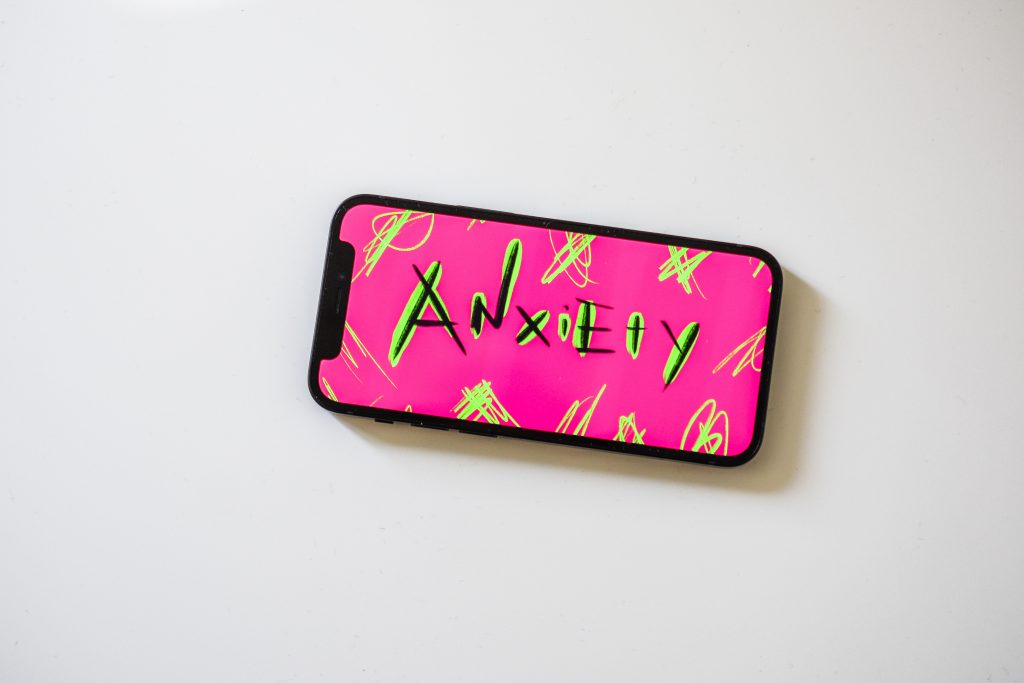
Clinicians and patients alike will be familiar with the long waitlists that often accompany access to mental health support. While this is primarily an issue of capacity and under-funding, leading to feelings of frustration and hopelessness, you may be surprised to find that there is some evidence that these waitlists have their uses.
A 2013 study by Whiteford and colleagues found that, over a 3-month period, 23% of cases of depression improved without intervention. Over the course of a year, this number increased to 53%. Collecting data on incidences of spontaneous remission or recovery is important for several reasons, including the potential impact on treatment policy.
While some information is available on the untreated course of depression, less is known about what happens when anxiety is left untreated. As anxiety disorders have a huge worldwide impact (Fineberg et al., 2013; Polancyzk et al., 2015; read more about the rise of anxiety disorders in the UK in Alice and Derek’s blog), it is important to learn more about spontaneous recovery in this population.
To do this, Scott et al. (2022) conducted a systematic review and meta-analysis exploring symptom improvement and response among individuals with anxiety disorders randomised to no-treatment controls in clinical trials. The authors also explored differences between different types of anxiety disorders.

Research suggests that a percentage of depressive disorder cases can improve within 3 months without treatment. Is this also the case for anxiety disorders?
Methods
The authors searched four electronic databases using terms related to anxiety disorders and randomised controlled trials (RCTs). One author screened all titles and abstracts, with a second author double-screening a randomly selected 10%. All full-text articles were reviewed by two authors, and relevant data (including changes in control participant anxiety) were extracted.
The Cochrane Risk of Bias tool (Sterne et al., 2019) was used to assess study quality.
The authors used a random effects model for the meta-analysis, assuming that heterogeneity within samples and methodologies between studies would yield differing true effect sizes. Effect sizes were calculated using Hedges’ g.
Results
173 studies, comprising 15,250 participants, were included in the meta-analysis. The most frequently diagnosed anxiety disorders were:
- Social anxiety disorder (n = 35.7%)
- Generalised anxiety disorder (n = 18.8%)
- Panic disorder without agoraphobia (n = 12.3%)
Most studies used waitlist controls (94.2%), with the average length of time being 11-12 weeks. Control groups were most frequently compared against individual psychotherapy (49.1%) and internet-delivered psychotherapy (26.0%)
The meta-analysis found that:
- Anxiety improved a small but statistically significant amount without intervention (g = 0.17, 95% CI [0.14 to 0.21])
- This relationship wasn’t consistent across different anxiety disorders where some people showed no significant change:
- people with specific phobia (g = 0.01, 95% CI [-0.11 to 0.20])
- people with panic disorder and agoraphobia (g = 0.08, 95% CI [-0.04 to 0.20])
- If a study assessed anxiety via symptom questionnaire rather than using a clinician interview, participants showed more significant recovery (g = 0.28, 95% CI [0.17 to 0.39]) versus g = 16, 95% CI [0.12 to 0.19])
- Control participant anxiety showed greater improvements in studies that followed best practice in reducing potential bias:
- intent-to-treat approach: g = 0.23, 95% CI [0.18 to 0.27] versus other approaches: g = 0.11, 95% CI [0.06 to 0.15]
- pre-registration: g = 0.26, 95% CI [0.20 to 0.32] versus no pre-registration: g = 13, 95% CI [0.07 to 0.19])
- The longer a person waited without treatment, the more their anxiety improved, but this effect wore off after 20 weeks:
- 0-4 weeks: g = 0.01, 95% CI [0.13 to 0.15]
- 5-8 weeks: g = 0.10, 95% CI [0.01 to 0.18]
- 9-12 weeks: g = 0.26, 95% CI [0.20 to 0.32]
- 13-16 weeks: g = 0.19, 95% CI [0.07 to 0.31]
- 20+ weeks: g = 0.11, 95% CI [0.04 to 0.25]).
Of the 173 studies, 71 were identified as high risk of bias and 80 had some concerns. Only 22 were rated as low risk.
The authors also examined how publication bias affected their meta-analysis.
Typically, a ‘file drawer effect’ refers to the idea of researchers ‘filing away’ studies with non-significant outcomes, leading to an overrepresentation of studies with large intervention effects. As the current study examined control groups, the authors predicted a reverse file drawer effect; that studies showing large improvements in control participant anxiety would be less likely to be published, as they would minimise the comparative effect of the intervention.
The authors investigated this by examining the (a)symmetry of a funnel plot and found their prediction to be correct – there is a likely underrepresentation in this meta-analysis of studies showing larger control effects. When adjusted for the effects of publication bias, the effect size of receiving no treatment increased from g = 0.17 to g = 0.24.

This meta-analysis examined the course of untreated anxiety disorders over time, and found a small but significant effect for the improvement of anxiety for people who did not receive any treatment.
Conclusions
Although the effect was small, this study found evidence that anxiety disorders can improve over time without treatment.
However, this wasn’t true for all anxiety disorders, with specific phobia and panic disorder with agoraphobia not showing improvement. This led the authors to suggest that these two disorders may be particularly chronic and less likely to improve without treatment, potentially due to the strength of behavioural avoidance as a maintaining factor.
Further, the authors concluded that “anxiety disorders may follow a more chronic course compared to depression”. This is because only 15% of participants experienced a ‘clinically meaningful’ improvement without treatment, referring to remission, in comparison to 23% reported by Whiteford et al. (2013) regarding depression. However, further research is needed to explore this comparison.

15% of participants experienced a ‘clinically meaningful’ improvement in anxiety symptoms without treatment, which is 8% less than those with depression.
Strengths and limitations
Strengths
- This is the first study of its kind to explore the untreated course of anxiety disorders, with the authors identifying a novel way to explore a topic that would be hard to investigate ethically using experimental methods
- The study is statistically powerful as it includes many RCTs and assesses risk of bias with a widely used, robust instrument
- This study exhibits moderate heterogeneity (I2 = 52%), which is understandable given the variety of anxiety disorders included which were assessed in lots of different ways. While this could mean that it is potentially risky to draw strong conclusions from this meta-analysis, the authors utilised this heterogeneity to their advantage by conducting subgroup analyses. This enabled them to pick apart identified heterogeneity and show how each factor affects the likelihood of anxiety improving on its own.
Limitations
- One potential limitation, as discussed briefly by the authors, is that all the participants were treatment-seeking. Given that many individuals with anxiety do not seek support, this could limit the generalisability of the findings.
- As symptoms may be heightened or associated with comorbidity in treatment-seeking populations (Patel et al., 2022), the course of untreated anxiety disorders may have different trajectories in treatment-seeking versus non-treatment-seeking samples. These results, therefore, may not be wholly representative or generalisable. It could, however, be argued that this is a moot point in terms of implications for clinical practice, given that the vast majority of those coming into contact with clinicians are treatment-seeking.
- The authors could have conducted a more exhaustive search for papers – for example, identifying relevant unpublished and non-English language studies. These amendments would likely have reduced the magnitude of (or eliminated) the reverse file drawer effect, whilst increasing the international generalisability of the findings. However, a colossal 173 studies were included in the final meta-analysis, making it very statistically powerful regardless.

This review suggests that, in some people, some anxiety disorders may improve without treatment, whereas others (panic disorder with agoraphobia and specific phobia) will not improve without treatment.
Implications for practice
While the significant heterogeneity across studies included in this review means that it would be unwise to accept the headlines of this study at face value without looking at the subgroup analyses or the wider literature, two findings are of particular note in relation to policy and practice:
- Some anxiety disorders may improve or remit without intervention, meaning a brief period of ‘watchful waiting’ may be prudent in certain situations
- Specific phobia and panic disorder with agoraphobia do not show signs of improving without intervention, meaning that treatment should be provided as soon as possible for individuals with these conditions.
It’s worth commenting on the finding that only 15% of control participants experienced ‘clinically meaningful’ improvements in their anxiety, meaning 85% will still experience symptoms of anxiety. For those whose anxiety does not improve significantly or remit, this waiting period will not be a neutral limbo – it may be a highly difficult and distressing time for them, and this must be taken into account when considering the implementation of such findings.
Nonetheless, this needs to be balanced with realism about the overstretched NHS services providing interventions. In the current healthcare and economic context, it may be useful to know that there is some value in waiting lists, and that not all patients with anxiety disorders may end up needing treatment.
Another important reflection for practice is that those whose anxiety was assessed using a symptom questionnaire showed greater improvements without treatment than those who were diagnosed by clinician interview. This is likely due to the fact that these questionnaires:
- Don’t require symptoms to be experienced for a particularly long time in order to be considered present, and
- Don’t take the impact of a symptom into account.
Symptoms that are only present for a short time (and are less impactful) would not contribute to a diagnosis through clinician interview, but are influential in contributing to questionnaire results. It is important for clinicians to be aware of the varying results these different assessment methods can yield, as this information could be used to inform the type of treatment delivered. It also creates a healthy scepticism for questionnaire measures in the context of diagnosis, which is always important.
There are also research implications from this study, such as examining the specific characteristics of different types of anxiety disorders to try to identify predictors of spontaneous remission (learn more about anxiety disorder risk in Tessa’s Mental Elf blog). This would enable a stepped-care health system to more efficiently prioritise those whose anxiety will likely not remit without intervention.

Looking to the future, it seems important for researchers to consider how we can identify predictors of spontaneous recovery in anxiety, to better inform treatment priorities.
Statement of interests
None.
Links
Primary paper
Scott, A. J., Bisby, M. A., Heriseanu, A. I., Hathway, T., Karin, E., Gandy, M., … & Dear, B. F. (2022). Understanding the untreated course of anxiety disorders in treatment-seeking samples: A systematic review and meta-analysis. Journal of Anxiety Disorders, 89, 102590.
Other references
Fineberg, N. A., Haddad, P. M., Carpenter, L., Gannon, B., Sharpe, R., Young, A. H., … & Sahakian, B. J. (2013). The size, burden and cost of disorders of the brain in the UK. Journal of Psychopharmacology, 27(9), 761-770.
Grishkov, A., & Tracy, D. (2021). Living in anxious times? The rise of anxiety disorders in the UK. The Mental Elf.
Patel, T. A., Schubert, F. T., Hom, M. A., & Cougle, J. R. (2022). Correlates of treatment seeking in individuals with social anxiety disorder: Findings from a nationally representative sample. Journal of Anxiety Disorders, 91, 102616.
Polanczyk, G. V., Salum, G. A., Sugaya, L. S., Caye, A., & Rohde, L. A. (2015). Annual research review: A meta‐analysis of the worldwide prevalence of mental disorders in children and adolescents. Journal of Child Psychology and Psychiatry, 56(3), 345-365.
Reardon, T. (2022). Persistent anxiety disorders: who is most at risk?. The Mental Elf.
Sterne, J. A., Savović, J., Page, M. J., Elbers, R. G., Blencowe, N. S., Boutron, I., … & Higgins, J. P. (2019). RoB 2: a revised tool for assessing risk of bias in randomised trials. BMJ, 366.
Whiteford, H. A., Harris, M. G., McKeon, G., Baxter, A., Pennell, C., Barendregt, J. J., & Wang, J. (2013). Estimating remission from untreated major depression: a systematic review and meta-analysis. Psychological Medicine, 43(8), 1569-1585.

The blog highlights possible risks of a no-treatment approach to treatment of anxiety. The end result may be an improvement in levels of anxiety but how does a person survive the intensity and pain of anxious feelings while they wait to get to the stage of